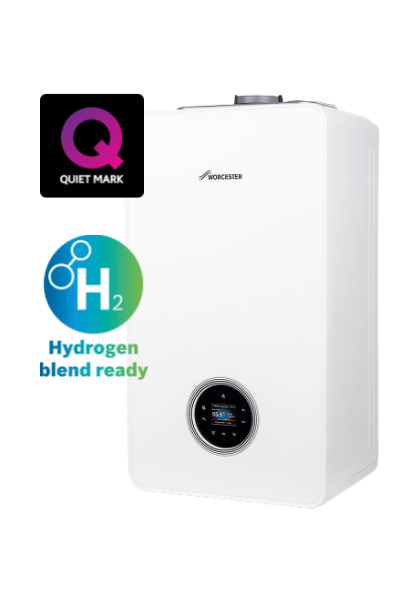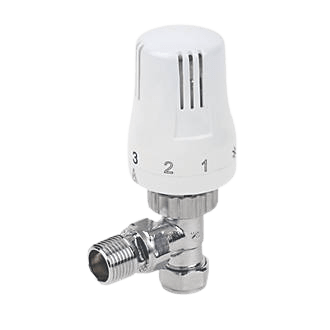Your basket is currently empty!
Written by
What is The Ideal Room Temperature in The UK?

What is the ideal room temperature for your home?

Well, this is one of those questions that does not have a simple answer because there is no single temperature that is appropriate for all situations. The truth is that the ideal temperature varies depending on the time of day, personal preference, and even location.
Get fixed prices online in just 20 seconds – Click here
Get your Fixed Price Boiler Quotes Online
New Gas Boilers with £0 Deposit & 0% Interest Finance Availble
Get the best quotes for boiler installation online in under 1 minute now
Why is the ideal room temperature so important?
Room temperature is important for your comfort whilst maintaining low energy usage, but having said that, there will be a set ideal room temperature for you. This will fall between a range of 16 and 22 degrees, depending on the different rooms in the house.
The ideal room temperature for your home is discussed in this article. In addition, we also take into account things like the people living in the home and how each of them may have different needs and requirements.
We provide excellent advice, like how to use smart thermostats to adjust your heating. This is so that you can try to keep everyone happy, regardless of how warm or cold they prefer it to be!
If you’re wondering “what temperature should I set the thermostat to?” or “what temperature should a room be?” don’t worry! Continue reading to find out how.
Get your Fixed Price Boiler Quotes Online
New Gas Boilers with £0 Deposit & 0% Interest Finance Availble
Get the best quotes for boiler installation online in under 1 minute now
What is the ideal home temperature?
The UK government used to recommend a temperature of 21 degrees for living rooms and 18 degrees for bedrooms. However, now they just recommend 18 degrees for the whole home.
The available evidence suggests that 18°C is the most appropriate threshold, with no evidence to support the 21°C recommendation, especially for the fit and healthy.
It also made clear that the ageing process makes our bodies less able to regulate our temperature and detect cold. Therefore, a recommendation that simply relied on people adjusting the temperature to one that is ‘comfortable’ could endanger older people.
What should the ideal room temperature be?

Knowing your average room temperature can help you determine whether your energy consumption is higher or lower than usual.
It’s also helpful to remember that the temperature you prefer will vary depending on which room you’re in. Because different people enjoy varying their room temperature, there is no one-size-fits-all solution.
Ideal living room temperature – 19 to 22 degrees
Overall, the ideal living room temperature in the UK should be between 19 and 22 degrees. The amount of time you spend sitting still in the room determines whether your ideal room temperature is at the top or bottom of the temperature range.
If you’re sitting still all evening watching television, the ideal ambient temperature will likely feel higher to you.
If you’ve just sat still for five minutes to enjoy a cup of tea, the ideal room temperature will be closer to 19° or even a few degrees lower.
Get fixed prices online in just 20 seconds – Click here
Ideal bedroom temperature – 15 to 18 degrees
Generally, your home’s temperature shouldn’t be too hot for your bedroom. This is because it must vary from room to room. This is because most people dislike being hot at night for long periods. Especially when they are snuggled in a warm duvet or cosy sleepwear.
To fall asleep, your bedroom must not be heated above 20°. However, the best room temperature falls between 15 and 16 degrees.
According to the UK Sleep Council, sleeping in the recommended temperature range of 16 to 18 degrees will likely result in a good night’s sleep. This will also result in opportunities to conserve energy and save money. This might be a fantastic way to save energy and reduce heating bills thus reducing carbon emissions and leading to a reduced carbon footprint.
Small changes can have a big impact! Simply lowering the minimum temperature a few degrees and adding extra blankets to the bed will significantly reduce energy bills.
Ideal bathroom temperature – 22 degrees
You’re currently taking a warm shower or bath, but you’re dreading having to leave the luxurious warmth and enter the chilly bathroom!
This means that the bathroom should be kept at about 22 degrees, which is warmer than the living room. Keep in mind, however, that you may not need to turn the thermometer up to feel warmer temperatures.
Because running the shower or bath creates humidity, which maintains the warmth in the air, your heating system will not have to work as hard to maintain the preferred room temperature (also known as air humidity).
Ideal kitchen temperature – 18 to 20 degrees
Due to heat and humidity fluctuations, the ideal room temperature for a kitchen is between 18 and 20 degrees. When cooking, knowing the room’s temperature is extremely useful. If you know what the temperature is in your kitchen, you can compare it to the standard room temperature and adjust your cooking accordingly.
Get your Fixed Price Boiler Quotes Online
New Gas Boilers with £0 Deposit & 0% Interest Finance Availble
Get the best quotes for boiler installation online in under 1 minute now
Has the ideal room temperature changed?
Do we now prefer warmer or colder homes than we did previously? The average temperature fluctuates but has recently risen as a central heating system has become more common in our homes.
Furthermore, our homes are much better insulated today, with double-glazing windows and underfloor heating, than they were in the past, and we have a lot of control over the thermostat settings.
Another factor is that many people are more inactive than they used to be. As a result, if we sit more, the ideal room temperature will be higher than it would be if we were active. In 1970, the average home temperature in the UK was around 12°C. It’s now between 17°C and 23°C, which is a significant increase in both temperatures and increased heating costs.
What is a healthy room temperature?
A healthy amount of warmth can vary depending on your age and any health issues.
Air humidity has a significant impact; the higher the humidity, the lower the required room temperature, and vice versa.
What is the ideal room temperature for a healthy adult?
The basic level of heat for a healthy person wearing warm clothing is 18°C. This measure is proposed by the World Health Organisation and the NHS.
What is the ideal room temperature for an elderly person?
In the UK especially, when it gets cold outside, it takes extra care to be warm if you’re over 65. As a result, keeping a higher-than-usual ideal room temperature may be necessary.
It is advised that an elderly person’s room temperature be kept above 18 °C. If you have a medical condition, you will need to take extra precautions to maintain a comfortable body temperature.
Extremely hot temperatures above 24°C and extremely cold temperatures below 12°C, for example, may cause medical problems if you have a heart condition.
What is the ideal room temperature for babies and children?
It is vital to monitor the temperature in areas where our infants and young children are present, especially in children’s bedrooms. This is due to children’s inability to regulate their body temperature in the same way that adults do.
According to the UK Baby Centre, the recommended room temperature for a sleeping baby is between 16 and 20 degrees. Many baby monitors include a built-in room temperature thermometer to assist you in monitoring the temperature. However, this could be an excellent location for a thermostatic radiator valve.
What is the ideal room temperature for pets?
Even our dogs have preferences when it comes to the perfect room temperature. Now, just like people, very young puppies and kittens, as well as senior dogs, will feel more at ease in a warmer room temperature.
It also depends on the coat type that your pet has. A very short-coated, lightweight dog breed, like an Italian Greyhound, will choose a higher temperature for their living space than a long-coated dog breed, like a Bearded Collie.
What temperature is too cold for my home?
Even though we all want to use less energy, spend less when using less heat, and stay cool, maintaining a comfortable indoor temperature is still necessary for our health and performance. Whether you’re healthy or not, Penn State University research has found that when we’re exposed to extreme cold, we begin to experience memory loss, lose coordination, and find it difficult to make sound decisions.
Furthermore, because cold air does not transport water vapour as effectively, it may end up accumulating on walls and other surfaces, creating an ideal environment for mould growth.
So, what is too cold? Most people find that a room with a temperature lower than 12 degrees creates an uneasy atmosphere.
What is the ambient temperature?
Simply put, ambient temperature is the temperature of the air around you. Because we all have different temperatures for thermal comfort, this means that it is the same as what we commonly consider to be room temperature.
Apart from whether or not the central heating is turned on, other factors that can affect ambient temperature include the placement of electrical appliances.
A television, DVD player, computer, screen, and mobile phone, for example, will raise the average room temperature in a small living space.
Buying a digital thermostat, on the other hand, is one of the most efficient ways to improve the ambient room temperature. A digital thermostat can be set to a specific temperature at specific times.
What temperature should I set for the thermostat in the winter?
If you’re wondering, “What temperature should I set my thermostat?” The solution is straightforward. In the UK, 12°C is considered too cold and 30°C is considered too hot.
The ideal temperature for winter may vary depending on the exact needs of your home. Some homeowners are fully comfortable at 65°F, while others aren’t until the thermostat is set to 72°F.
Normally, you should set your thermostat to the warmest temperature that you and your family can tolerate. That temperature is frequently between 68°F which is 20°C and 70°F which is 21.1°C. Setting your thermostat to a temperature within that range will keep your family warm and comfortable inside while also saving you money on heating bills.
How to save energy costs in the winter and summer?
Turning down the thermostat by one degree

Did you know that the Energy Saving Trust estimates that turning down the thermostat by one degree can save you £80 per year?
The coolest part is that you probably won’t notice any difference in the temperature.
Keeping the heat in the room
You can also help to maintain this temperature and reduce heating costs by drawing curtains at dusk and keeping doors closed to avoid draughts.
Roof insulation will help to ensure that you are not using more energy than necessary. This will help to reduce carbon emissions as you try to maintain the ideal room temperature in your home.
Annual boiler servicing
Having the boiler serviced once a year will also ensure that it is operating as efficiently as possible, lowering your energy consumption and, as a result, your carbon footprint. Due to this being so useful, you should check the average boiler service cost beforehand to see how much you may end up paying and what for.
Replace old boilers

As a boiler gets older it will reduce inefficiency and that will increase your energy usage. There have also been huge advances in the technology used in their manufacture. This can mean that a boiler replacement could mean a reduction in energy bills and your heating bill.
That then means that a heating system can now provide greater control of room temperature, especially when combined with a smart thermostat, smart meters and thermostatic radiator valves. If you want to reduce gas consumption in the future, you can even get hydrogen-ready boilers.
Different duvets for different seasons
It can be tempting to have just one duvet for the entire year. When the outside temperature gets colder, you raise the thermostat to compensate.
However, if you purchase all-weather duvets, you will not need to use the heating controls to stay warm.
You could also buy bedding with a lower duvet tog rating and then clip thinner duvets together to give more warmth in the winter months.
Use a smart thermostat

Smart technology has made a significant difference in our ability to maintain the best temperature in our homes. This is because it ensures that we feel comfortable no matter what room we’re in.
A smart thermostat is essentially an extension of the smart devices that we’ve grown accustomed to having in our homes; several smart appliances, such as smart meters and smart thermostats, can assist you in better controlling the temperature in your home.
Manufacturers provide several smart solutions for their product lines, which include the best combi boiler as well as regular and system central heating solutions.
All, however, boast the ability to give you more control over achieving the ideal room temperature while using less energy.
Smart heating apps
Apps on mobile phones and internet-connected devices allow you to control the temperature of a room no matter where you are.
So, if you realise you’ll be home later than expected, you can adjust when the heating comes on to avoid heating an empty house.
Some apps can also detect when windows are left open in a room even though the heating is turned on and send you a notification.
When they detect that everyone has left, the temperature will be reduced to avoid wasting energy.
We’ve all heard that if something is simple, we’re more likely to do it!
So, being able to lower the room temperature by one or two degrees with a couple of swipes on our phones Via the smart thermostat. This means we’re more likely to act when it’s slightly warmer than we need.
Install thermostatic radiator valves (TRV)

We’ve already spoken about how we need different ideal temperatures in different rooms of the house. But a thermostatic radiator valve gives you more control around the house.
What a perfect temperature in the living room could be far below the recommended temperature in the bedroom. To prevent using more energy than necessary, we should set specific temperatures in each room.
Now a smart thermostat can handle this for you. You do need thermostatic radiator valves in place to create your ideal room temperature around the home.
These valves are self-regulating with a temperature sensor. During the day they can change the flow of hot water that enters the radiator.
When a change is needed to maintain the ideal room temperature. A capsule within the head of the valve begins to contract or expand. That then causes the movement of a pin in the valve causing it to close or open.
Increase the heating with a TRV
If it begins to get warmer than the ideal room temperature, then the pin will cause the valve to close. The hot water movement into the radiator is slowed down so the average room temperature falls.
Reduce the heating with a TRV
If temperatures drop below a comfortable level, the capsule will expand and the pin closes the valves. Now hot water can flow into the radiator. Which allows the area to become slightly warmer.
What temperature should you be?
Again this all varies from person to person, there is no “perfect temperature” nor is there an ideal temperature. However, you may have heard that the “normal” body temperature is 98.6°F (37°C). But this number is only an average. Your body temperature may be slightly higher or lower.
What is the ideal temperature for a boiler?
If you want to achieve an ideal boiler temperature with a suitable balance of warmth and efficiency, set your boiler to at least 65°C. It won’t hurt to raise the temperature a few degrees. However, it is critical not to set it any lower. This is done to prevent bacteria in the water from growing and causing diseases.
What temperature should the central heating thermostat be set at?
There’s no denying that the best temperature for central heating thermostat settings in the UK has risen significantly over the last few decades! In comparison to the 1970s average of around 12°C, the current average ranges from 17 to 23°C. According to one government study, the average temperature is 17.7°C, while a survey conducted by us found a higher average of 23°C.
Ensure you have control of your heating
Whether it’s through smart thermostats or taking steps in your home to reduce the loss of heating. There are many things that you can do to maintain the ideal temperature.
You can now use technology to heat a cold room or reduce a high-temperature room. This is because you can get the ideal room temperature for your needs.
If you can see that a new boiler could make a huge difference in ensuring that you can maintain the appropriate home temperature. Now is the time to get a compare and get a new boiler quote.
Get your Fixed Price Boiler Quotes Online
New Gas Boilers with £0 Deposit & 0% Interest Finance Availble
Get the best quotes for boiler installation online in under 1 minute now
Written by
Get your Fixed Price Boiler Quotes Online
New Gas Boilers with £0 Deposit & 0% Interest Finance Availble
Get the best quotes for boiler installation online in under 1 minute now
What is in this article?
- What is the ideal room temperature for your home?
- Why is the ideal room temperature so important?
- What is the ideal home temperature?
- What should the ideal room temperature be?
- Has the ideal room temperature changed?
- What is a healthy room temperature?
- What is the ideal room temperature for a healthy adult?
- What is the ideal room temperature for an elderly person?
- What is the ideal room temperature for babies and children?
- What is the ideal room temperature for pets?
- What temperature is too cold for my home?
- What is the ambient temperature?
- What temperature should I set for the thermostat in the winter?





